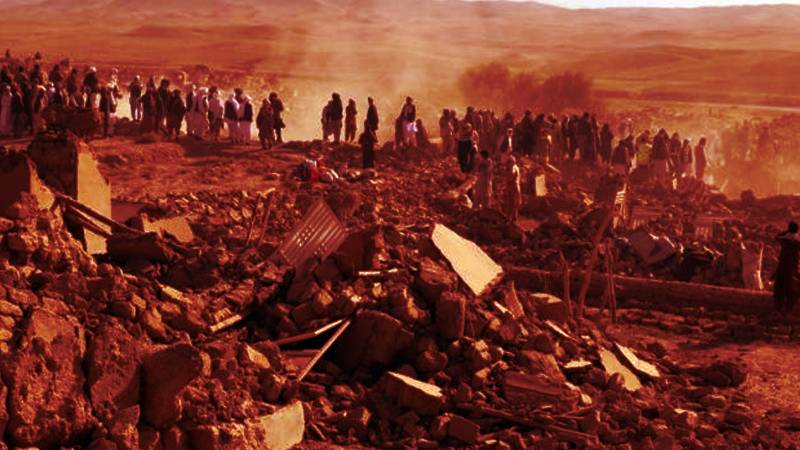
A powerful magnitude 6.3 earthquake that jolted western Afghanistan on Sunday left at least one person dead and more than 90 others hurt in the same area where more than 1,000 people perished in earthquakes the previous week.
After spending days sleeping outside in anticipation of aftershocks from last week's earthquakes, residents of the city of Herat had just started to return to their homes when the earthquake struck.
Hamid Nizami, a 27-year-old trader, said that the residents of Herat are terrified and alarmed. "It's Allah's blessing that it happened during the day; people were awake."
The center of Sunday's earthquake, which had an epicenter 33 kilometers (20 miles) northwest of Herat city, the seat of the same-named western province, was struck just after 8:00 a.m. (0330 GMT), and aftershocks of magnitudes 5.4 and 4.2 were felt, according to the US Geological Survey.
Abdul Qadeem Mohammadi, chief doctor of Herat Regional Hospital, reported that "so far, 93 injured and one dead have been registered". The National Disaster Management Authorities, however, stated that they were still looking into the extent of the damage.
On October 7 (Saturday), the same region of Herat was shaken by an earthquake of magnitude 6.3 and eight powerful aftershocks, which led to the collapse of huge sections of rural homes, the deaths of over 1,000 people, and hundreds more injuries, according to AFP.
Days later, a second tremor of the same strength killed one person and wounded 130 others, leaving hundreds of panicked locals without shelter and volunteers searching for survivors. According to UNICEF, more than 90% of those killed in the earthquakes were women and children.
According to Siddig Ibrahim, a field officer for the organization located in Herat, "Women and children are often at home, tending to the household and caring for children, so when structures collapse, they are the most at risk."
The United Nations said that the earthquakes had harmed more than 12,000 people and entirely destroyed at least six villages in the remote Zinda Jan area.

